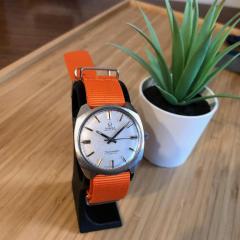Converting an automatic watch to be hand winding - How to modify the mainspring?
-
Recently Browsing
- No registered users viewing this page.
-
Topics
-
Posts
-
Sure! Some very accomplished repairers never use epilame! I have often wondered if it is worth the trouble. Not using epilame will shorten the service intervals though, but that could be better perhaps both for the owner and the repairer!? Speaking of oiling, I just read this: After WWII in the 1950s the first Synthetic Oils came on the market. Most watchmakers did not rush to use these oils since they were bad for business now that the watch serviced with Synthetic oil would not come back to him for service for another 5-7 years he would lose a lot of income. ~Ofrei.com Anyway, I wouldn't be surprised if it would be more correct to think of epilame as a binder rather than a repellant. Until convinced otherwise that's how I will think of epilame.
-
By Neverenoughwatches · Posted
I read that same article last night H. I think epilame is too much headache for me, sources aren't always accurate, some conflicting. Such is the GRAVITY of this situation, Is it ok if i just STICK to a thixotropic oil 🤣 -
Not sure I follow along. As I stated in one of my previous posts, the epilame will remain intact between rubbing parts as long as the surface is lubricated by oil or grease. Maybe it's just a coincidence, but note how the epilame-treated surface is illustrated in @Waggy's post. It looks like the oil is exposed to a binder (epilame!) so that it can't move sideways.
-
By Neverenoughwatches · Posted
The epilame under the oil will also be removed Unless the oil makes a barrier between the epilame and the escape teeth 😅 I think i need two strong coffees now 🤣









Recommended Posts